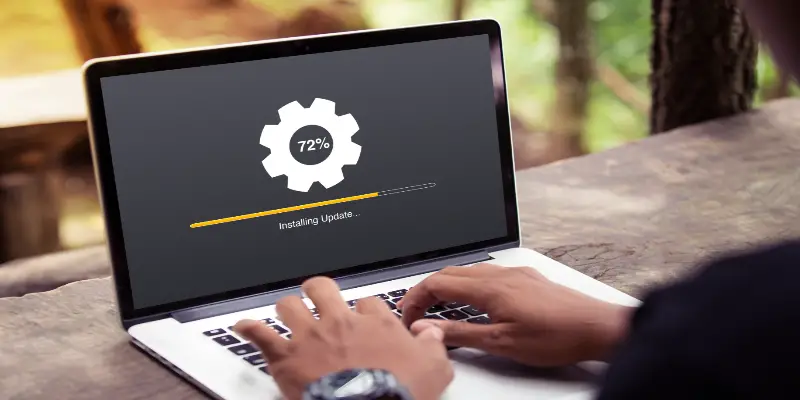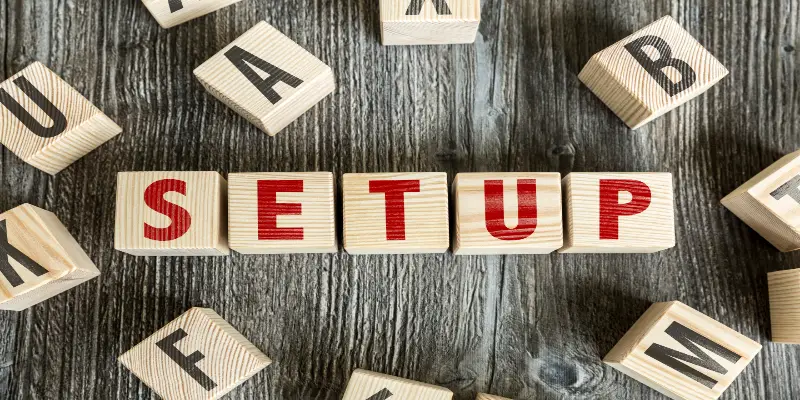Disclaimer: This post may contain affiliate links, meaning we get a small commission if you make a purchase through our links, at no cost to you. For more information, please visit our Disclaimer Page.
Replacing an aging hard drive is one of the best ways to speed up your PC’s performance. However, you often have to reinstall Windows after replacing the hard drive, and not many people are familiar with the process. So, how do you install Windows after replacing your computer’s hard drive?
There are several ways you can install Windows after replacing the hard drive. You can reinstall Windows using a USB or disk. Alternatively, you can choose to install new Windows without using a USB or disk.
I will show you three different methods of installing Windows after replacing your PC’s hard drive. You’ll learn how to install Windows with USB and how you can do so with neither USB nor disk. So, let’s get into it.
Table of Contents
Do You Need to Reinstall Windows after Replacing the Hard Drive?
Reinstalling Windows after hard drive replacement isn’t necessary. Windows does a good job of reconfiguring itself after you replace the hard drive. You have to ensure there’s a proper backup of your data before taking action.
However, you can choose to reinstall windows after replacing the hard drive if you want to start afresh with a brand-new Windows OS. This process, also known as a clean install, is like getting a brand new computer. The downside to a clean install is that it deletes all data, programs, files, and games on the computer.
The best way to avoid losing your data is to back them up somewhere else. That way, you’re able to access needed files after a reinstallation.
How to Install Windows after Replacing the Hard Drive
There are multiple ways of reinstalling Windows after replacing the hard drive. Here are three popular methods of Windows reinstallation after hard drive replacement:
How to Install Windows 10 on a New Hard Drive with a USB
The instructions below will walk you through the process of installing Windows 10 on a fresh hard drive using a USB flash drive.
Step 1: Buy Windows 10
The first step is to buy Windows 10. Although Windows 10 is available for free download, the validity spans 30 days. You’ll need the Windows Activation License to use the OS for a lifetime.
Step 2: Download and Run the Microsoft Media Creation Tool
Previously, people would burn Windows ISO files on DVD and install the OS on their computer from the DVD. However, that has changed with the easy-to-use Microsoft Media Creation Tool. This tool provides an easier route for Windows installation.
- Download the Microsoft Media Creation Tool and launch it
- Accept the software’s Terms and Conditions, and then select Create installation media (USB flash drive, DVD, or ISO file) for another PC
- Select your preferred language, architecture, and edition
- The next step is to choose how you intend to install Windows 10: either use a USB flash drive (of at least 8GB) or download the ISO file, which you’ll need to burn to a DVD later.
- Select USB flash drive and then choose the particular USB you want to use. Ensure you’ve backed up relevant files in the USB before this step, as the process will format the flash drive.
- The Microsoft Media Creation Tool will start downloading Windows 10 to your USB flash drive.
- On completion of the process, you’ll receive a notification that reads: “Your USB flash drive is ready.”
- Click on Finish to leave the window.
Step 3: Install Windows 10 on the New Hard Drive
After downloading the Windows 10 file to your USB flash drive, the next step is to install it on the new hard drive.
- Insert the USB flash drive into the target computer and turn it on.
- The computer will boot from the flash drive. If that doesn’t happen, input the BIOS and set the computer to boot from the USB.
- On the following page, select the language to install, time and currency format, and keyboard or input method.
- Click on Next
- Click on Install Now on the next window
- Enter the Windows 10 license key. You can also choose the “I don’t have a product key” option to continue, although you’ll have to input it later.
- Accept the license terms.
- Click Next
- The following window will show you two options. One is Upgrade: Install Windows and keep files, settings, and applications, which allows you to move the files, settings, and apps on the computer to Windows 10. The second option is Custom: Install Windows only (advanced), which lets you perform a clean install of the new Windows 10
- Then choose the location to install Windows 10, and then click Next
- The Windows Setup Wizard will begin installation and notify you once the process is complete
Step 4: Launch Windows 10
The final step is to sign in to your new Windows 10 with your Microsoft account. Your computer is ready to use!
How to Install Windows 10 after Replacing the Hard Drive without Disk
You can install Windows 10 after replacing the hard drive without disk by using a system transfer tool. This method entails backing up Windows OS and transferring it to the new hard drive. Following is a step-by-step guide on how to go about it:
Step One: Create Emergency Disk
- Connect an external hard drive or a USB drive to your computer
- Run the system transfer tool and select Create Emergency Disk
- Select USB as the desired boot disk location
- Click Create
Step Two: Create System Backup Image
- Launch Windows 10 and select System Backup
- Select Microsoft Windows 10
- On the Destination dropdown, select the USB or external hard drive
- Click on Proceed to begin the creation of a system backup image
- Once complete, eject the USB/external drive that serves as the emergency disk and the USB/external drive containing the system backup image.
Step 3: Boot Computer with the New Hard Drive
- Plug the emergency disk and system backup image drive into the target computer
- Turn on the computer, and it should boot from the emergency disk. Otherwise, set the computer to boot from the disk.
Step 4: Transfer Windows OS to the Target Computer
- Remember to backup relevant files in the old hard drive before transferring the Windows OS. The system transfer process deletes all data on the target drive.
- Launch the system transfer tool and click on System Transfer
- Select the system backup image you earlier saved on your USB or external drive and then click OK
- Choose the new hard drive you want to transfer the Windows 10 OS and click on Proceed
Step 5: Restart your Computer
- Configure your computer to start from the new hard drive.
- When you restart your computer, it should boot from the hard disk that contains Windows 10.
- Accept any necessary upgrades and ensure that your new operating system is fully operational.
How to Install Windows 10 on a New Hard Drive without a Disk or USB
The third option on this list is installing Windows 10 on a new hard drive without a disk or USB. This method is the most difficult of all three ways, but the following instructions can help:
Step One: Download Windows 10 SEO image and PC Driver Installers
The first step involves getting everything set for the Windows 10 installation.
- Download Windows 10
- Launch Windows 10 Setup and enter your license key
- Confirm the language, architecture, and edition. The Windows license key will determine the edition of the Windows
- Click Next to continue
- Select ISO file as the media you want to use and click Next
- Choose the download destination for the Windows ISO files, and your download will begin
- Click Finish after the download
- The next step is to download device installers for your computer and save the installers to a dedicated folder.
- Click on the folder and select Properties
- Click Sharing and then Advanced Sharing
- On the Advanced Sharing tap, check the “Share this folder box” and enable full control under Permissions.
- Click OK to finish the process
Step Two: Boot to Command Prompt
- Click on the Windows Start button and select Run
- Go to Advanced Startup Options and click Troubleshoot
- Next, click on Advanced Options and then Command Prompt
- Select your admin account and enter your password to launch the Command Prompt
Step Three: Launch Windows Setup
- Open the ISO Files you earlier downloaded and run Windows Setup
- To activate Windows 10, you may need to enter the product key. You can skip the process by clicking on “I don’t have a product key” at the bottom of the screen
- The next step is choosing where to install Windows 10
Step Four: Finish Installation
Windows 10 can easily locate the correct drivers. If Windows 10 is unable to find the drivers, you do not need to worry. The drivers you installed earlier will come in handy. Run and install the drivers manually.
You might need to install the chipset driver before you can execute this process. Run Windows Update and install other relevant drivers. You’re all set!
Replacing a Hard Drive without Reinstalling Windows
After reinstalling windows, you have to go through the trouble of reinstalling the programs and games you want. Also, you have to restore your files from backup before your computer can truly feel alive.
So, how do you avoid this stress and replace your hard drive without reinstalling Windows?
The best way to do that is via disk cloning. With disk cloning software or a Windows 10 migration tool, you can easily copy the OS, apps, and files in your old drive to a new hard drive.
This option is an excellent fit if you urgently need to replace your hard drive or move your data to a larger hard drive. Here’s how to replace a hard drive without reinstalling Windows using a Windows cloning tool:
- Connect the new hard drive to the computer
- Launch the MiniTool Partition Wizard program
- Choose the old hard drive you want to copy and click on Copy Disk Wizard
- Select the new hard drive and choose your copy options
- Click Apply to begin cloning
- Restart your PC
Conclusion
Windows installation is a task you can carry out on your own. While you have the option of not reinstalling Windows after a hard drive replacement, doing so is the best way to ensure your computer’s optimum performance.
Following the instructions in this step-by-step guide will make the entire process seamless. Regardless of the method you choose, you get a “new” computer after a clean install.



